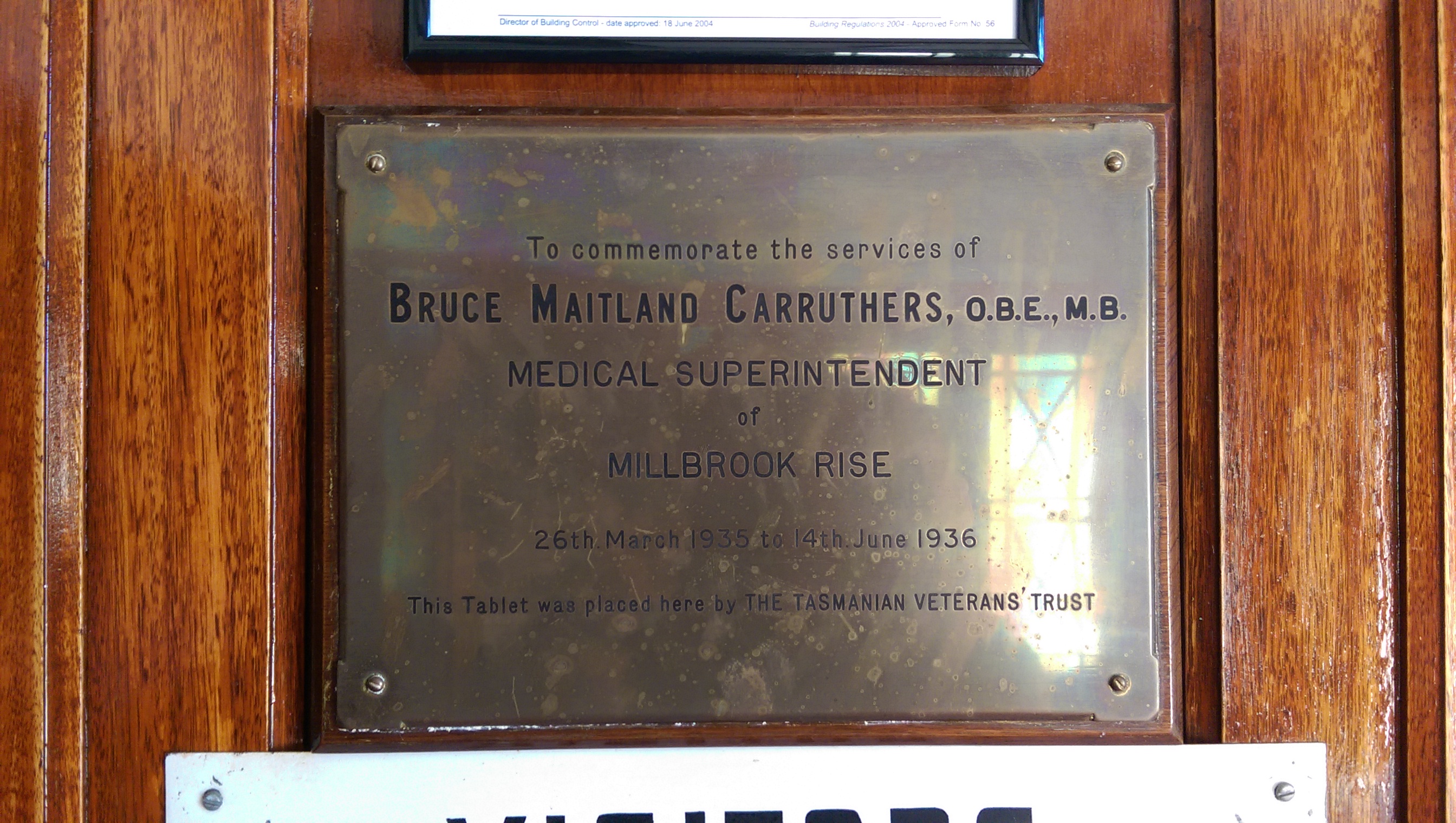Today we have released for public viewing a new website tab dedicated to the history of Millbrook Rise Psychopathic Hospital.
The site is a current mental health provider and is off limits to site visitors. I also acknowledge that the images and historical recording may disturb some people who have had history at this site.
We will continue to add information and stories to this tab as we discover them.
If you have any stories please contact me at mark@willowcourttasmania.org to discuss options and methods of recording and possible usage.
Millbrook Rise was a Ward of the Royal Derwent Hospital from 1968 but existed under it’s own Act. of Parliament from 1933 til 1968 but shared Administration Management with the Mental Diseases and Lachlan Park Hospital.
Click the image below to see a collection of images and information from Derwent House.
(c) Copyright 2017. All images and writing remains the copyright property of “Willow Court Tasmania History Group”.
My thanks for access to the site can not be acknowledged publicly, however I remain grateful to have seen the buildings and hear about the history.
I also acknowledge our own Historian Consultant, Tony Nicholson for his input and review of the information presented.
Mark Krause

8 Comments
My grandfather was a WW1 veteran who suffered mental illness and died in 1922 at New Norfolk. On a record some years ago I read that he died at Millbrook Rise, and at the time I didn’t know where that was . So I clearly remember this noted location, though I have lost track of exactly where I saw the record. I think it was most likely the State Archives. I have recently found his admission record for “New Norfolk Invalid and Mental Asylum, Patient Admission Register, 1830-1930”, compiled by Dianne Cassidy.
I see no mention of Millbrook Rise in this register, and am also aware that the Millbrook Rise Hospital formally started in 1934, on its own site across the highway from the balance of the New Norfolk Hospital. Because my grandfather died 12 years earlier, I wonder about the reference to Millbrook Rise. Because I can not return to where I originally saw the note, I do realise it may have only been a later comment added many years after my grandfather’s death, but not necessarily. I note that 1934 was a long time after the end of WW1, and I am aware there was quite a push starting about 1916 or 17, from families all over Australia to separate returned soldiers from the general Asylum patients. So I wonder if there may have been a special ward named Millbrook Rise before the actual construction of the separate building in 1934. Or possibly even an old residence of that name, used for the soldiers in the early years.
In my brief recent searches I have found no such reference to date.
I would be very grateful for any information you could give me. Thanks for considering my query, and thanks for maintaining the website about the hospital.
This is a question for our local historian and military enthusiast. He is a farmer and takes a while to answer but I will put this question too him.
Cheers
Mark Krause
He knows of no WRd that was separate and for the exclusive use of returned veterans. Derwent Ward or House is also at Millbrook Rise, but wasn’t available til 1934.
Hi there. I believe Millbrook Rise and the Derwent Building on the current mental health site was originally built for returning veterans. It is very likely that your grand father was here and passed away before it was taken over by services for mental health.
I was told by my late father, Lewis Rice, that the real Millbrook Rise was actually further up the Lachlan Creek and was the start of the viaduct that serviced Terry’s Mill at the mouth of the Lachlan Creek and Derwent River.
The next time I see Tony Nicholson our consultant historian I will ask if he could confirm that. Lewis Rice is a well known name and his knowledge of the history worthy of checking up. Thanks for that information and if your get anymore evidence that could solve this please post it.
Cheers
Mark
My great aunty, Violet Horatoria, (Horatio), Leppard was here in the 1960’s and up until her passing in the mid ’70’s. I never knew why until as an adult, my father explained that it was for mental health patients. I would like to know if I can have access to any information regarding her?
Thankin you,
Jill Clark
Hi Jill. Family members can access their family members health records through the Department of Health. https://willowcourttasmania.org/2017/09/12/linc-tasmania-search-family-history/